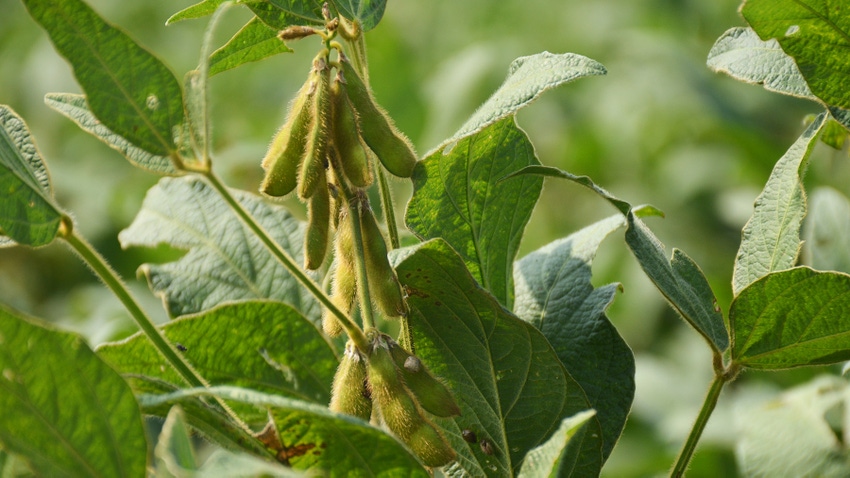
Michael Plumblee encourages South Carolina soybean farmers who want to maximize their yields this year to turn to the best Group V and Group VI soybean varieties they can find and try to get those soybeans planted from late April to the beginning of May.
That is the takeaway of research at Clemson University looking at the impact of maturity groups on maximizing soybean yields in South Carolina. Plumblee, Clemson University Extension corn and soybean specialist, highlighted the research at the South Carolina Corn and Soybean Growers Annual Meeting at the Santee Conference Center in Santee Dec. 14.
In the research, Clemson scientists examined planting maturity Group IV soybeans in South Carolina since there is an interest in planting early maturing varieties in the Palmetto State. The research basically shows that due to quality issues, there is no real benefit of planting Group IV soybeans rather than Group V and Group VI soybeans.
Research in 2023 showed damage in the range of 9% to 20%, depending on field location and other factors. Fungicide sprays didn’t make a big difference in preserving quality. In the research, Plumblee and his team planted Group IV soybeans on April 25 and sprayed a dual mode of action fungicide product at three different growth stages.
The extra fungicide sprays did not preserve quality, compared to the untreated check. Plumblee did note that in 2023 most of South Carolina had a dry year with very little rain.
“The moral of the story is if you’re going to grow Group IV and think you’re going to spray a lot of fungicides on them to preserve seed quality, that’s not what we saw this year so I wouldn’t recommend that. Obviously, spraying three fungicides a year is probably not economical, but we wanted to know can we get fungicides on the pod to help preserve them,” Plumblee said.
The research was conducted at both the Pee Dee Research and Extension Center in Florence and the Edisto Research and Extension Center in Blackville. The extra fungicide sprays showed no real difference in terms of yield, either.
In short, when it comes to improved yield, planting date was most important. South Carolina soybean farmers can maximize yields with a late April to early May planting date. Even when soybeans were planted early, the research showed no significant yield bump in planting Group IV soybeans in a dryland situation.
“What we did is we planted Group IV, V, VI, and VII soybeans at the end of every month from March through August in Blackville and Florence, two different locations in the Coastal Plain. All were strip tilled on 30-inch rows. We planted about 120,000 seeds per acre. Everything is dryland. With the majority of our acres being dryland, that’s where we feel we needed to be. All of the planting dates are about the 25th of the month so,” Plumblee explained.
The research did show that Group IV soybeans planted from April to May did produce taller plants compared to the other maturity groups, but Plumblee said taller plants did not equate to higher yields for Group IV soybeans.
“In dryland situations, these Group V through Group VII soybeans are probably where we need to be and that’s been documented over the years. Among these planting dates, Maturity Group IVs did not significantly yield greater than the other maturity groups. This maturity group selection is not as critical as we normally think. More so, let’s pick the right variety,” Plumblee said.
About the Author(s)
You May Also Like






